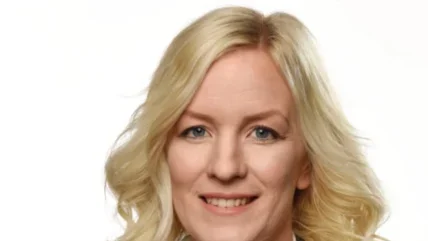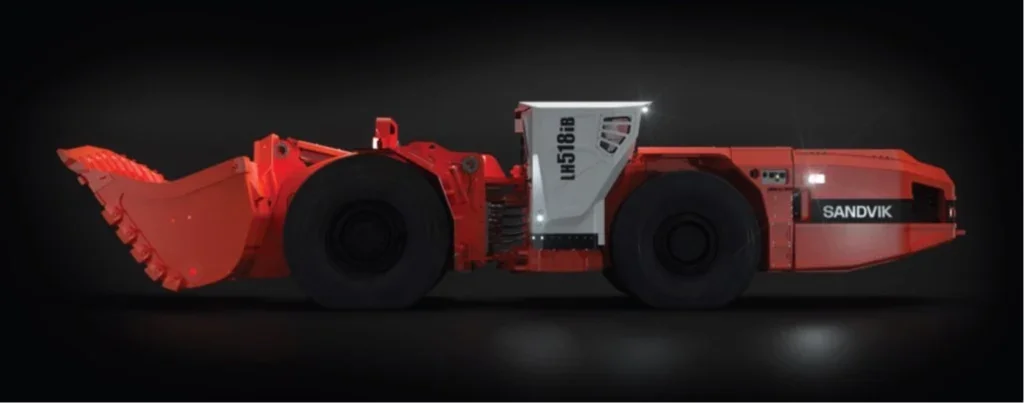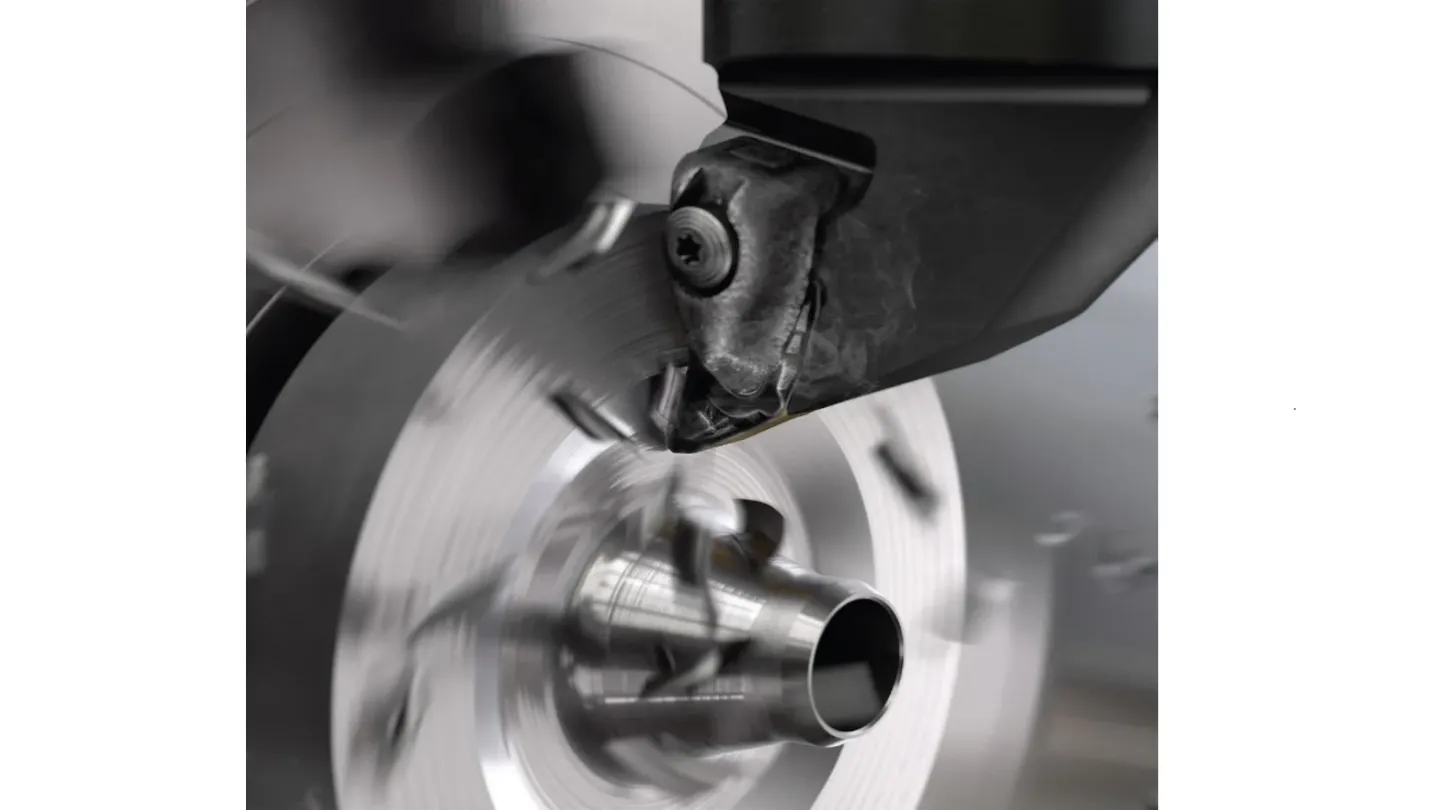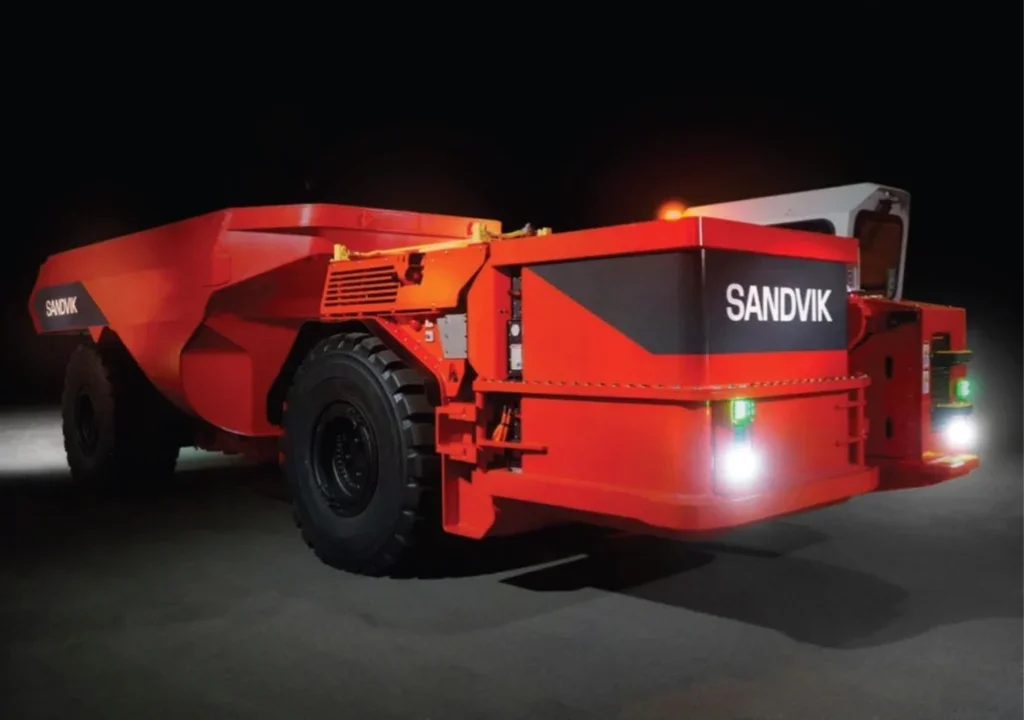
For most of human history, mining was an intensely physical profession. Rugged men in hats ventured deep beneath the earth, then used the sweat off their brows to hew what they found. But if you visit the LaRonde gold mine, nestled among the pine forests of western Quebec, you’ll find something quite different. To be sure, the miners themselves are as tough as ever – how could you not be when you have to work some 2,250m below the earth, and when the outside temperature in winter can drop to -44°C? Yet alongside the courage and the muscle and the brawn, the workers at LaRonde also rely on something else: AutoMine. Developed by the Sandvik Group, this flexible, modular system uses LTE wireless to automate much of the mining process, from resource mapping to the trucks that carry ore up from the depths.
As the deepest single-lift shaft in the Western Hemisphere, LaRonde gains much by such clever use of technology. Yet examine AutoMine, and its creator, and it soon becomes obvious that the Canadian operation is far from alone. Boasting some 40,000 employees, Sandvik straddles global mining from Australia to Mali, digitalising and automating in fields as varied as rock processing and machinery. Not that these operations are scattershot. Rather, Cecilia Felton emphasises that, whatever the innovation, her company strives to “enhance productivity, sustainability and profitability for our customers”. Examine any of the firm’s 20 business divisions and it’s hard to gainsay the Sandvik CFO. According to company statistics, for instance, Sandvik’s drilling tools can cut diesel use by 20%, saving users both time and money.
Of course, Felton and her team are hardly immune to these changes. Much of Sandvik’s work may be done at the literal coalface, indeed, but the finance function is equally eager to sharpen its own operations, exploiting analysis tools and forging outside partnerships to better understand this sprawling, decentralised business. That’s shadowed by other improvements too, with Felton pushing ahead with KPIs and scorecards, even as she meets colleagues and investors to understand the future of her firm. And just as technology in the field can improve the sustainability of mining – through lower diesel emissions to give just one example – so too is Felton crucial to her employer’s environmental aims. “I think the finance function has an important role to play,” is how she describes the interplay between greenbacks and the green agenda, an argument that seems especially prescient if you look ahead.
A mine idea
Felton is arguably the ideal candidate to lead Sandvik’s sprawling finance apparatus. Though still in her 30s, she’s already been at the Swedish giant for a decade, working in business control as far back as 2013. Since then, Felton has floated from accounting to investments, before becoming Sandvik’s chief financial officer in February 2022. To put it differently, this is an executive with the ability to reflect on her company’s journey over the long term – something she obviously relishes. “A lot has happened in Sandvik in terms of how we work digitally since I joined ten years ago,” she says, “and we are still in the middle of a digital transformation journey.”
“A lot has happened in Sandvik in terms of how we work digitally since I joined ten years ago… and we are still in the middle of a digital transformation journey.”
As novelties like AutoMine imply, this transformation is vividly apparent across Sandvik’s nearly two dozen business divisions. With technology an increasingly central part of the mining experience – the global digital mining sector is expected to enjoy a CAGR of over 13% through 2030 – it’s no wonder that Sandvik is getting involved too. Yet if the firm’s digital tentacles stretch from AI (supporting production optimisation) to the cloud (digitalising tool inventories), the back office has enjoyed a revamp too. By partnering with a Finnish fintech, for instance, Sandvik’s number counters can now automate their audit trail. By adopting Power PI by Microsoft, they can get to grips with mountains of data, just as well when Sandvik operates across some 150 countries.

None of this is accidental. As Felton says, technology is an “important enabler” for Sandvik’s finance function, particularly when it comes to informing business decisions. “It is also important that we automate our own processes to the extent possible,” the CFO continues, “so that we can spend our time on value-adding analysis.” That’s equally true given Sandvik’s unusual operating structure. An intensely decentralised company, each of Sandvik’s division presidents can run their businesses as they see fit. This hands-off approach can evidently offer advantages. Felton notes that independence allows executives to stick close to customer demands, a fact that may help explain the 16% revenue growth figures Sandvik lately posted. Not that this free-wheeling approach makes Felton’s job any easier. Given the sheer scale of Sandvik’s operations she warns that a “robust performance management system” is vital to ensuring this $16bn giant runs smoothly.
Going deep
How to balance Sandvik’s bewildering size with its spirit of independence? If technological wizardry provides something of an answer, it’s underpinned by a vigorous system of checks and balances – starting with Sandvik’s so-called financial scorecards. A set of financial KPIs, tracked monthly by Felton and her team, are restated for acquisitions and accounting changes to ensure they’re easily comparable. Mandatory for every Sandvik division, they allow Felton to evaluate progress consistently, especially as they equally encompass five-quarter rolling forecasts. That last innovation surely makes sense. As Felton puts it: “It is just as important to look at where we are heading as to what our performance has been in the past.”

It goes without saying that keeping abreast of so many metrics would be impossible if Sandvik’s CFO were a homebody. “In between the closings, I travel quite a lot to various parts of the Sandvik Group, meet investors and analysts, support several projects within the group, and work with the executive management team to develop and execute on the Sandvik strategy,” is how the CFO puts it. “There is certainly no lack of interesting things to fill my days with, and it is particularly exciting to do it in a company like Sandvik, that thrives on R&D and innovation.” At the same time, these meetings are far more than mere social calls. Shaping Sandvik’s priorities over the year ahead, they help foster the finance talent of tomorrow, smoothing career paths and facilitating transfers. Felton herself is arguably a beneficiary here: she enjoyed four distinct job titles at Sandvik before finally taking the firm’s top finance job.
In a more general sense, it’s clear that collaboration is vital to another Sandvik objective: sustainability. Browse the company’s website and it’s clearly important in theory. The company hopes to have adopted a circular business model for 90% of its operations by 2030, while greenhouse emissions are also in Sandvik’s sights. For her part, Felton is convinced that the finance function is central to these aspiration – particularly with the EU’s Corporate Sustainability Reporting Directive (CSRD), which came into force in January 2023, obliging C-suites to publish figures on everything from anticorruption efforts to the environmental impact of manufacturing. “Areas such as reporting, consolidating data, internal controls and external audits,” Felton adds, “are all core competencies within the finance organisation and areas that will be required for the CSRD reporting.”
Data mining
Yet if sustainability is patently important to Sandvik, this is ultimately still a corporate venture. And with the International Energy Agency estimating that going green will cost global business an eye-watering $45tn, does Felton see a tension between her employer’s planet-boosting credentials on the one hand – and her own job as a number-cruncher on the other? The short answer is no. On the contrary, she suggests that sustainability offers “a major business opportunity” for Sandvik, not least given the rising popularity of environmental initiatives among miners themselves. Fair enough: so-called green mining is already worth around $11bn, a figure expected to hit $17.6bn by 2027.
40,000
The number of Sandvik employees worldwide, together making sales across 150 countries.
That’s echoed by specific innovations too. If AutoMine promises to make operations faster and safer – the fewer people venturing underground, the better it is for everyone – other technologies elegantly dovetail sustainability and economics. Consider, for instance, the firm’s new eco-friendly crushing systems. At the moment, the crushing of rocks consumes 40% of all the energy used across global mining. But by adopting a range of Sandvik’s digital tools, for example around understanding load cycles and pressure parameters, operators can quickly make their crushing machines far more efficient, benefiting their account books and the planet at large.

13%
The percentage of CAGR of the digital mining sector through 2030.
Sandvik
To put it differently, the future of Sandvik is clearly being shaped by ones and zeros – something Felton says is mirrored in her own work. “I think it will be more digital and more automated,” she suggests of the finance function at Sandvik. “This will free up valuable time for analysis which will be increasingly important in order for the finance function to provide business decision support in a rapidly changing world.” Given how far her employer has travelled since Felton first arrived at Sandvik, back in 2013, this certainly feels plausible. All the while, the LaRonde mine, and countless places like it, continue to evolve.
This article first appeared in World Mining Frontiers.






